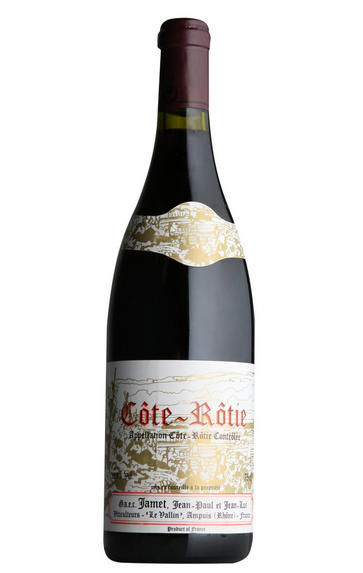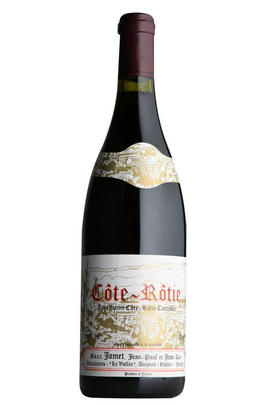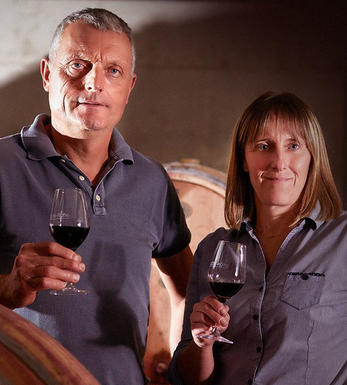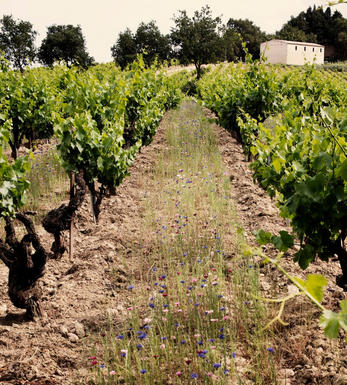
2015 Côte-Rôtie, Domaine Jamet, Rhône

Critics reviews
The 2015 Côte-Rôte from Domaine Jamet is utterly sublime. It has a beguilingly complex bouquet with the most pronounced garrigue-like scents, touches of Italian delicatessen and clove, all delivered with wonderful precision, black olive compote emerging with time. The palate is beautifully defined with superb tension, very cohesive and crystalline, unerringly pure and silky so that the finish completely disguises its backbone. Brilliant.
Drink 2030 - 2065
Neal Martin, Vinous.com (March 2023)
Quite the opposite to the 2016, the 2015 is open-knit and very savoury. Game, ripe red and black fruits and smoked bacon all show on the nose. The palate has admirable freshness, but the fruit has a softer, rounder feel. The tannins are already melting into the wine, adding to the generous, silken mouthfeel. Finely balanced and moreish, it is a delicious example that can be drunk now but has great persistence for further ageing.
Drink 2020 - 2035
Tom Parker MW, JancisRobinson.com (October 2022)
Superb nose with very ripe, complex blackberries and a wealth of black pepper, dark chocolate, graphite, and a bold array of spices. Super-fresh with very fragrant, savoury complexity. The palate has a bold array of rich, ripe, sweetly fruited tannins. Dark chocolate, liquorice, and dense spices are included, too. It is very long and composed of deep, black fruit and plum paste. Super long. A blend of 15 different parcels. You barely sense the 15 per cent new oak or the 100 per cent whole-cluster fermentation.
Drink from 2025 onward
James Suckling, JamesSuckling.com (August 2018)
About this WINE

Domaine Jamet
Established in 1976 by Joseph Jamet and his wife, Simone, Domaine Jamet has been a family-owned and operated winery for several generations. Joseph's sons, Jean-Paul and Jean-Luc, have continued the winemaking tradition, ensuring the Domaine's reputation for crafting outstanding Côte-Rôtie wines.
The vineyards are situated on steep slopes, where the terroir consists of schist, granite, and limestone soils. These diverse soil types contribute to the complexity and nuances found in the wines. The Domaine owns and manages several prime vineyard sites within the Côte-Rôtie appellation, including such renowned areas as La Landonne, Côte Brune, and Côte Blonde.
Domaine Jamet practices sustainable viticulture in the vineyards, emphasising careful vineyard management and working in harmony with nature. The grapes are hand-harvested and undergo rigorous selection to ensure that only the finest fruit reaches the cellar.
In the cellar, the winemaking process is characterised by traditional practices and a non-interventionist approach. The grapes are fermented using indigenous yeasts, allowing for a natural fermentation process that preserves the unique characteristics of the vineyards. The wines are then aged in a combination of oak barrels and large casks to allow for a subtle integration of oak flavours while respecting the purity of the fruit.

Côte-Rôtie
Côte-Rôtie is one of the most famous of the northern Rhône appellations, with some single vineyard cuvées now selling for the same prices as First Growth Bordeaux. It is the northernmost outpost of the Syrah grape.
Côte-Rôtie translates as ‘roasted hillside’, as the south-facing slopes are exposed to the maximum-possible sunlight. Vines have been planted here since Roman times, although the appellation was only created in 1940. Today it covers 500 hectares, with 276 hectares of vineyards stretched across eight kilometres.
Phylloxera devastated vineyards in the late 1800s and Côte-Rôtie’s fortunes remained in the doldrums for another century. After the War, a farmer would receive double the price for a kilo of apricots as for a kilo of grapes, hence vineyards were grubbed up and wine production became increasingly smaller.
It has only really been recognised as a top-quality wine-producing area since the 1970s, with Guigal being the main impetus behind its revival. The two best slopes, Côte Brune and Côte Blonde, rise steeply behind Ampuis and overlook the river. The Côte Brune wines are much firmer and more masculine (the soils are clay and ironstone), whereas the Côte Blonde makes wines with more finesse and elegance due to its light, sandy-limestone soil. Both the Côte Brune and Côte Blonde vineyards rise to 1,000 feet, with a gradient of 30 to 50 degrees.
The wines are made from the Syrah grape, however up to 20 percent of Viogner can be used in the blend, adding finesse, elegance and floral characteristics to the wine. Viognier ripens more quickly than Syrah and the appellation rules stipulate that the grapes must be added to the fermentation – rather than blended later. The best Côte-Rôtie are very deep in colour, tannic and spicy, and need 10 years to evolve and develop.
There are nearly 60 official vineyards (lieux-dits); the best-known are: La Mouline, La Chatillonne (Vidal-Fleury, owned by Guigal) and La Garde (Rostaing) in Côte Blonde; La Viallière, (Rostaing), La Landonne (Guigal, Rostaing) and La Turque (Guigal) in Côte Brune.
Styles vary from heavily-extracted tannic wines which need many years to soften through to lighter, supple and less-structured wines which do not require extended bottle ageing. The most famous wines of Côte-Rôtie are Guigal’s three single-vineyard cuvées: La Mouline, La Turque and La Landonne. These are aged in new wood for 48 months, and demand for them amongst connoisseurs and collectors is significant, leading to prices sometimes comparable to Bordeaux First Growths.
Recommended producers: Guigal, Gerrin, Rostaing, Ogier, Burgaud
Best vintages: 2006, 2005, 2004, 2001, 1999, 1991, 1990, 1985

Syrah/Shiraz
A noble black grape variety grown particularly in the Northern Rhône where it produces the great red wines of Hermitage, Cote Rôtie and Cornas, and in Australia where it produces wines of startling depth and intensity. Reasonably low yields are a crucial factor for quality as is picking at optimum ripeness. Its heartland, Hermitage and Côte Rôtie, consists of 270 hectares of steeply terraced vineyards producing wines that brim with pepper, spices, tar and black treacle when young. After 5-10 years they become smooth and velvety with pronounced fruit characteristics of damsons, raspberries, blackcurrants and loganberries.
It is now grown extensively in the Southern Rhône where it is blended with Grenache and Mourvèdre to produce the great red wines of Châteauneuf du Pape and Gigondas amongst others. Its spiritual home in Australia is the Barossa Valley, where there are plantings dating as far back as 1860. Australian Shiraz tends to be sweeter than its Northern Rhône counterpart and the best examples are redolent of new leather, dark chocolate, liquorice, and prunes and display a blackcurrant lusciousness.
South African producers such as Eben Sadie are now producing world- class Shiraz wines that represent astonishing value for money.


Buying options
Add to wishlist
Description
The 2015 Côte-Rôte from Domaine Jamet is utterly sublime. It has a beguilingly complex bouquet with the most pronounced garrigue-like scents, touches of Italian delicatessen and clove, all delivered with wonderful precision, black olive compote emerging with time. The palate is beautifully defined with superb tension, very cohesive and crystalline, unerringly pure and silky so that the finish completely disguises its backbone. Brilliant.
Drink 2030 - 2065
Neal Martin, Vinous.com (March 2023)
wine at a glance
Delivery and quality guarantee